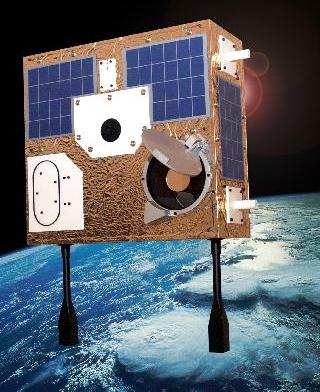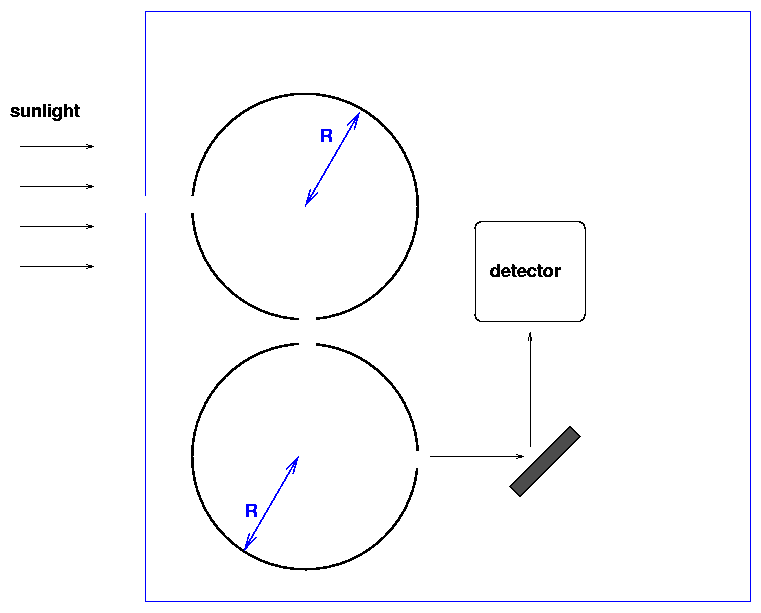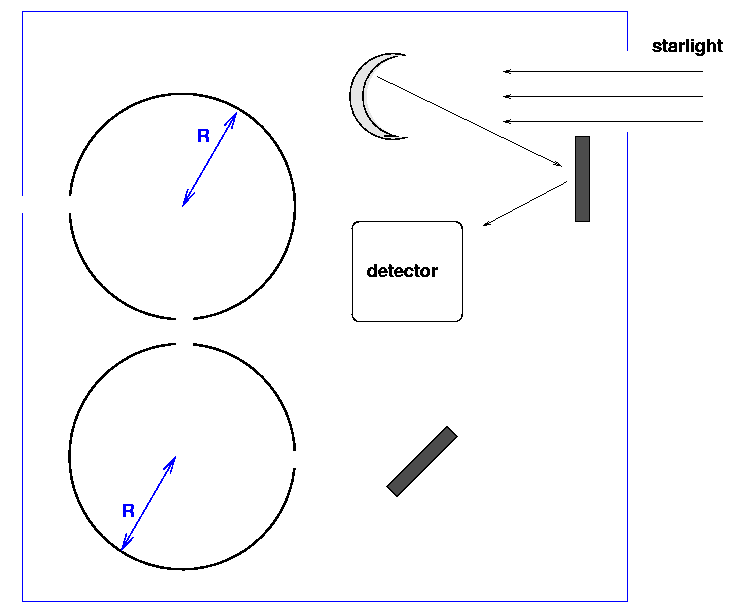
Table of Contents
Send a free-flying spacecraft into low earth orbit (LEO).
Place on board:
Because this spacecraft will look only at relatively bright stars, it is free of many of the complicating factors which make conventional space telescopes so expensive and complex. Examples:
This doesn't need to be the Hubble Space Telescope. A better comparison is the MOST satellite:

Use the Sun as a calibration source. Measure the Sun and a sample of bright stars with the same instruments.
There are several instruments which currently (or in the near future) measure the solar irradiance. For example,
By using the Sun as a reference source, we let other groups do much of the hard work.
We can, of course, include several on-board sources as secondary references, just to verify that the instruments are not suffering significant contamination or degradation. LEDs are a reasonable choice.
Of course, the Sun is very much brighter than any other star. How can we cut down its intensity to a level comparable to that of a star? We can use geometry to do so in a predictable, precise manner. For example, a double integrating sphere:

Light passes through a hole of radius r in the spacecraft, enters one sphere of radius R, bounces around; some of the light goes through a second hole into a second sphere of radius R, then finally exits through a final small hole of radius r. The first sphere dilutes the intensity of sunlight by a factor r/R, and the second sphere by a similar factor. For reasonable values of these parameters, one can achieve large dilution factors:
r = 1 mm R = 100 mm --> 1/10,000 per sphere
--> 1/10^8 for two spheres
--> 20 magnitudes
The spectral properties of the spheres can be tested on the ground against NIST sources: shine the NIST source into the sphere. We can make a second check on the ground by placing one or more LEDs around the perimeter of the first and second spheres, and using them to illuminate the interiors. After the craft is launched, we can again shine the LEDs to verify that the reflective properties of the inner surfaces have not changed.
In order to make the tightest connection between light from the Sun and from a star, we design the craft so that light from a small telescope strikes the same detectors as light from the Sun, though via a different route.

Note that one can in theory allow light from both sources to strike the same detector simultaneously, if a particular star happens to be at just the right angle from the Sun (in this simple diagram, that angle happens to be 180 degrees). Even if the usual mode of operation is to measure one source at a time, one might design special calibration observations to use this capability.
If the craft is pointed so that sunlight does not enter the spheres, no significant flux will run from the spheres to the detector. Thus, one does not need a moving shutter in front of the spheres, saving a single-point failure mode. Likewise, one does not need a moving shutter in front of the small telescope.
How large must the telescope be? Suppose we wish to observe like Vega. Vega produces roughly 500,000 photons per second per square centimeter of collecting area through a wide-band filter in the visible. Thus, a telescope with a diameter of D = 10 cm will collect through a wide-band filter roughly
2
N = 500,000 photon/sec * pi * (5 cm)
= 40,000,000 photon/sec
A V-band filter has resolving power R = 6 or so. If we send the light into a spectrograph with resolving power R = 1000, we divide this number of photons by roughly 1000/6 = 166, leaving about 240,000 photons per second into each spectral bin.
Spreading this light over 10 or so pixels of a spectrograph camera per spectral bin reduces the number of photons per second per pixel to roughly 24,000. Assuming an overall efficiency of 1 percent in the spectrograph optics plus detectors, we arrive at roughly
2
( D )
240 * ( ------ ) (photons/sec) per pixel from Vega
( 10 cm )
Even a small telescope can collect hundreds or thousands of photons per pixel in a few seconds from a star of magnitude zero.
Now, a small telescope will provide wide field of view. Each pixel in the detector will cover a relatively large area on the sky, perhaps 10 or 100 square arcseconds. However, the very bright stars we observe will still overwhelm the background. These large pixels make tracking simple: keeping the craft pointed to within 10 arcseconds, or 30 arcseconds, is probably good enough.
If one builds an instrument which permits long exposure times, then one can calibrate fainter stars. Using the canonical D = 10 cm telescope, a fifth magnitude star would produce several photons per second per pixel. With an exposure of 10 minutes = 600 seconds, one would collect 2000 photons per pixel.
Tenth magnitude stars would be much too faint to observe with a D = 10 cm telescope.
Scientific criteria only:
Other criteria: